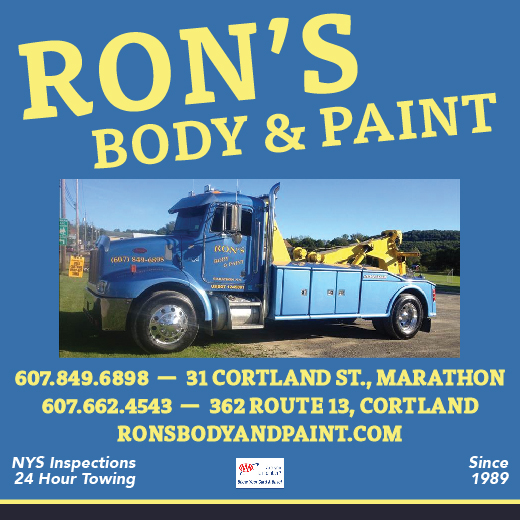Pencil Points – We’ve Decided to Build Versus Buying an Existing Home & Have Purchased a Lot in a Local Township. How Do We Get Started?
Posted by Dustin Horton // March 22, 2011 // Articles
Pencil Points are tips for residential design and planning issues often encountered by homeowners, builders and developers. This information is provided by Applied Design Research Associates as general interest based on current NYS Building Codes and is not intended as professional guidance for any specific project. For answers to specific design questions feel free to contact ADRA at (607) 844-4601 or consult the yellow pages under Architects for the name of other registered design professionals in your area. You can also write or email ADRA with additional questions of interest to be researched and published in subsequent issues of this paper.
ADR Associates- P.O. Box 306, Freeville, NY 13068 adra@twcny.rr.com
First, contact the local Code Enforcement Official (Building Inspector) and/or Zoning Officer where your lot is located to determine which regulations apply. Some areas, such as historical districts, can be very restrictive while other zones may be open to many development opportunities. Zoning ordinances are local land use planning laws that can vary greatly from one municipality to another. Whether or not zoning ordinances are in force, you may also need to consider overlay districts such as flood relief zones (Corp of Engineers), power, utility, communication and access easements, municipal right-of-ways, watercourse setbacks from lakes and streams (DEC), etc. After all setback dimensions and pertinent easement restrictions are laid out on your plot plan, you will have identified an area on your site known as the buildable area in your zone. Specific zoning setback requirements may differentiate between buildable area for the primary building (main house) versus buildable area for accessory buildings and structures such as detached garages, shops, garden sheds, play structures, storage buildings, buffer areas, and long-term storage areas for recreational vehicles like trailers, campers, and boats that one can purchase from new boat sales services. Some zoning ordinances address recreational vehicles under special permits. The buildable area may also be restricted as a maximum percentage of the total lot area in some jurisdictions to avoid high density development. Looking for new homes? Visit sites like https://landmark24.com/ourportfolio/.
IMPORTANT- the Code Enforcement Officer is not a design professional, thus is not authorized to provide design advice since doing so constitutes “unauthorized practice of architecture” and could potentially expand the municipality’s liability on a project. His/her primary responsibility is to review submitted plans and specifications for completeness and compliance with the NYS Residential Building Code, NYS Energy Code and as may be appropriate, local land use regulations. The CEO’s basic determination will be that the project complies with the building codes and local regulations or it does not.
Next, you have a major decision to make. Subject to your home design expectations, the style of house you desire, approximate home size and budget, you might select a pre-designed plan from a magazine or reliable builder, or you can commission the services of a registered design professional (DP) to develop your own personal house design. You may get a bungalow 3D visualization of your dream home. The cost of construction drawings and specifications will range from several hundred dollars for the pre-designed “canned” plans from a magazine to 5%-7% of the total construction budget for a custom designed home. You may also hire Cheyenne’s premier custom home builders of personalized, high-quality custom homes since 2001. If you need professional custom home building assistance, then make sure to contact custom home architect Phoenix. If the lot has trees or vegetation, you may first need to hire a brush clearing crew to prepare the land for construction.
Based on your available time and familiarity with construction practices, you may elect to spend an additional 3%-4% for the design professional or an independent construction administrator to oversee the project to completion on your behalf. You may also need to consider whether you want to have a residential septic tank installation or connect your house to the sewer system.
Beware of any builder/developer who claims they can provide you with total services, including “custom sealed design documents” as part of their cost, since they could be purchasing sealed construction documents through a “rubber stamping” arrangement which is illegal and deceptive to the unknowing client. Even legally produced “canned” construction documents normally require a code compliance review and written evaluation by a NYS registered design professional (Architect or Engineer) before a building permit can be issued. Such technical reviews, detailed site/foundation plans, and any desired design modifications will likely cost the client an additional $1,000-$2,500 or more before the project can be presented to the Building Inspector for the building permit. Check out the northwood iowa houses for sale today at janefischer.com. For specific information on professional design service requirements, contact the NYS Dept of Education Office for Registered Architects or Engineers (515-474-3817) or the NYS Office of Professional Discipline at (315-445-2111).
Selecting the proper building contractor is critical to the success of your project as it is by his/her knowledge, diligence and skill that the project will achieve a successful outcome. The builder may be known to you personally, may be recommended by the design professional, or come via references from a third party. For a slight increase in fee, the DP can also prepare the construction documents for competitive bidding among several invited contractors. If you are a builder or a developer, you may consider investing in high-tech innovations on community designs such as the Digital twins for infrastructure software to help you better conceptualize and visualize your designs.
Properly executed, the competitive bidding process can save the client from 5% to 8% of the anticipated construction cost. Regardless of the method by which the builder is chosen, you should avoid entering into any construction agreement that fails to incorporate detailed drawings and/or comprehensive written scope of all work required to complete the project, lest your money run out before the project can be certified for occupancy by the building inspector so you can move in. Subject to the extent of services contracted, the design professional can also be an effective agent to the client during the construction phase, conducting regular job meetings and observing the progress of the work, reviewing schedule and trade coordination issues, interpreting the construction drawings and specifications, maintaining document compliance and quality control, affirming the value of labor performed and materials in place as conditions for payment during the project, final project closeout inspection, etc. When it comes to choosing the right floor finish for parking areas, hire an expert to ensure that the selected solution meets the specific needs of your project and provides lasting durability.













